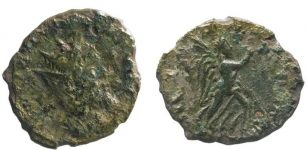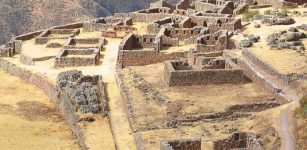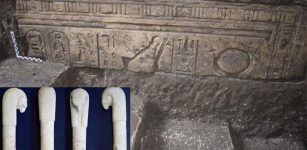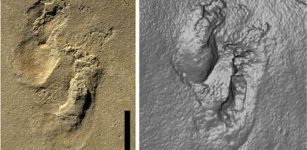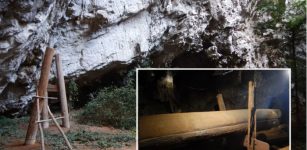Ancient Expensive Roman Domus With Beautiful Mosaic Unearthed In Rome
Conny Waters - AncientPages.com - Archaeologists working within the Colosseum Archaeological Park’s research project, have unearthed some rooms of a luxurious domus dated to the late Republican age.
Image credit: Ministry of Culture
The discovery was made in close vicinity of the Horrea Agrippiana warehouse complex along the Vicus Tuscus (commercial road that connected the river port on the Tiber and the Roman Forum) built by Augustus' son-in-law, Marco Vipsanio Agrippa.)
The domus is spread over several floors, probably divided into terraces, and characterized by at least three building phases dating back to the second half of the 2nd century BC and the end of the 1st century BC.
Distributed around an atrium/garden, the domus presents, as its main environment (the specus aestivus) a banquet hall that imitates a cave, used during the summer season and originally animated by spectacular games of water thanks to the passage of some lead fistulas (pipes) between the decorated walls.
An extraordinary wall decorated with the so-called "rustic" mosaic, characterized by the complexity of the scenes depicted and chronology, makes this discovery unique, researchers say in a press release.
The mosaic - dated to the last decades of the 2nd century BC - is made up of different types of shells, Egyptian blue tiles, precious glass, minute flakes of white marble or other types of stone, tartars (fragments of spongy travertine), and all this is bound by mortar and warps. The mosaic presents a complex sequence of figurative scenes.
In the four aedicules, defined by pilasters and decorated with vases from which shoots of lotus and vine leaves emerge, stacks of weapons are depicted with Celtic-type trumpets (carnyx), prows of ships with tridents, rudders with triremes which allude, perhaps , to a double triumph, land and naval, of the owner of the domus.
The large lunette above also presents a fascinating depiction of a landscape with, in the centre, a city, with a cliff simulated with travertine tartars, overlooking the sea crossed by three large ships, one of which with raised sails; a city wall with small towers surrounds the city equipped with porticoes, gates, and a large public building; on one side a pastoral scene.
The representation of a coastal city could allude to a war conquest by the owner of the domus, belonging to an aristocratic figure, presumably of senatorial rank, according to researchers. In an adjoining reception room, however, the careful restoration work has brought to light a white stucco covering with landscapes within fake architecture and figures of the highest quality.
“The discovery of a new domus with an environment decorated with a truly extraordinary mosaic represents an important result which demonstrates, once again, how much the Colosseum Archaeological Park and the Ministry of Culture are constantly committed to promoting research, knowledge, protection and enhancement of our extraordinary cultural heritage.
The discovery then has an important scientific value which makes the domus even more relevant. After the reopening of the Domus Tiberiana and the improvement of the accessibility of the Flavian Amphitheater, with the inauguration of the elevator which now reaches the third level, the heart of Romanity has therefore revealed an authentic treasure, which it will be our responsibility to safeguard and make accessible to the public", according the Minister of Culture, Gennaro Sangiuliano.
The archaeological excavation will end in the first months of 2024 and then, this specacular ancient structure will be prepared to finally welcome the public.
Written by Conny Waters - AncientPages.com Staff Writer






